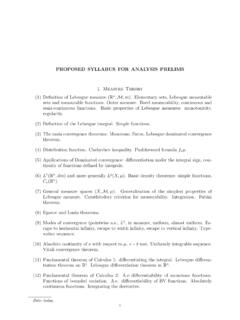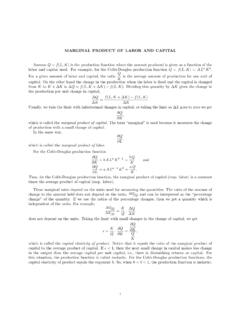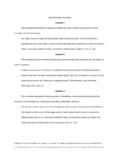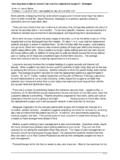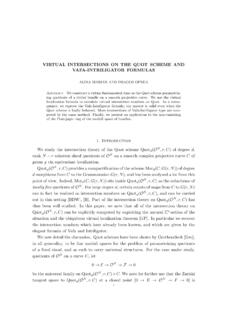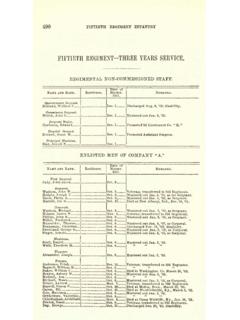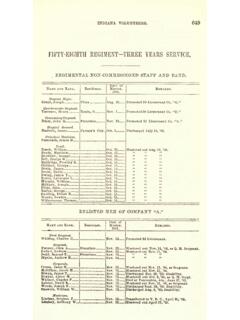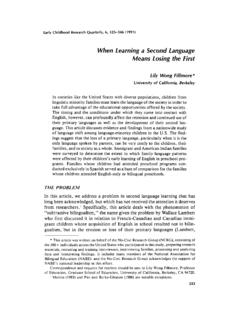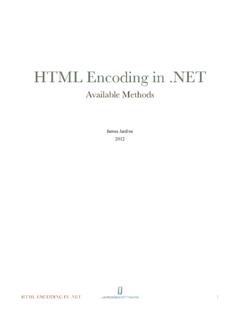Transcription of Stable maps and Quot schemes - Northwestern University
1 Stable maps and quot schemesMihnea Popa and Mike RothContents1. Introduction .. 12. Basic Setup .. 43. Dimension Estimates for Spaces of Stable Maps .. 74. Dimension Estimates for quot schemes .. 125. Examples and Optimality of the Bound .. 136. Components of quot andMg(G(E, k), d) for larged.. 177. Maps fromMg(G(E, k), d) to Quotk,d(E) .. 278. Application to Base Point Freeness on Moduli Spaces .. 351. IntroductionLetCbe a smooth projective curve of genusgover an algebraically closed field of arbitrarycharacteristic, andEa vector bundle onCof rankr. The main theme of this paper is therelationship between two different compactifications of the space of vector bundle quotients ofEof fixed rank and degree.
2 The first is Grothendieck s quot scheme Quotk,d(E) of coherentquotients of rankkand degreed, while the second is a compactificationMg(G(E, k), d) viastable maps into the relative GrassmannianG(E, k) ofk-dimensional quotient spaces schemes have played a central role in the classical study of vector bundles on curves, inparticular for constructing moduli spaces (see [23]) and for understanding their geometry(see [11]). In some general sense, any construction or computation in this area depends ongeometric or dimensional properties of (subsets of) quot schemes . The main product of thestudy of the relationship with the corresponding space of Stable maps will be a surprisinglygood understanding of these properties, as we will explain the availability of Stable maps, quot schemes have also been used in Gromov-Wittentheory as a way to compactify the space of maps into Grassmannians and thereby computeintersection numbers (most notably in [3], [4], [5] and subsequent extensions [8], [9], [10], [15]).
3 The introduction by Kontsevich of the moduli space of Stable maps now gives an alternatesetting for these calculations; however in this paper we follow in some respect an orthogonaldirection by showing how an understanding of the Stable map space leads to good results aboutQuot schemes . For instance, we establish an essentially optimal upper bound on the dimensionofMg(G(E, k), d), which gives as an immediate consequence an identical upper bound on thedimension of Quotk,d(E). Based on this, we prove what should be seen as the central result ofthe paper apparently not even conjectured before namely that for every vector bundleE,1 Quotk,d(E) is irreducible and generically smooth fordsufficiently large, and we precisely describeall the vector bundles for which the same thing holds forMg(G(E, k), d).
4 (We also make theseresults effective in the case of Stable bundles.) We show that, despite their similar behaviour,there are in general no natural morphisms between these two compactifications. Finally, as asecond application of the dimension bound, we obtain new cases of a conjecture on the effectivebase point freeness of linear series on moduli spaces of vector bundles now turn to a more detailed discussion of the results of the recent literature there has been some interest in finding practical dimension bounds for familiesof sheaves or vector bundles on curves, most notably for quot schemes (see [7], [14], [21]or [25]). Our first goal in this paper is to give a good answer to this question for an arbitraryvector bundleE.
5 We do this by considering the second compactification of the space of quotientbundles ofEof rankkand degreed, namely the Kontsevich moduli spaceMg(G(E, k), d)of Stable maps of arithmetic genusgto the relative Grassmann bundleG(E, k) overC. Here d H2(G(E, k),Z) denotes the homology class of a section corresponding to such a quotientofE. Setdk=dk(E) := minrkF=k{degF|Fa quotient ofE}, the minimal degree of a quotient bundle of rankk. Our first main result (G(E, k), d) k(r k) + (d dk)r, f or all d advantage of using the Stable map space comes from the possibility of applying methodscharacteristic to the study of families of curves. The idea is that once the space of maps is largeenough, the Bend and Break Lemma of Mori ensures the existence of degenerate curves relatedto quotient bundles of smaller degree, and this gives an inductive bound.
6 We expect that thisapproach might be useful in other situations involving fibrations over back to quot schemes , the theorem above implies almost immediately the Quotk,d(E) k(r k) + (d dk)r, f or all d cased=dkof this result was first proved by Mukai-Sakai [19] and was generalized to thesetting ofG-bundles in [14]. The general statement improves a similar result found in [21] bydifferent methods. It is worth emphasizing that while this is the statement which will be used insubsequent results, it is also here that it is particularly important to first go through the studyof the space of Stable maps: we don t know how to prove the estimate by looking only at theQuot next look at some examples showing certain aspects of the behaviour ofMg(G(E, k), d) andQuotk,d(E).
7 These show that the bounds above are essentially optimal if we are not willing to2impose extra conditions on the bundleE(and close to optimal even if we are). An illustration ofthis is the fact that the difference between our upper bound and the usual deformation theoreticlower boundrd ke k(r k)(g 1) gives:rdk ke k(r k)g,which is precisely a theorem of Lange and Mukai-Sakai generalizing a well known result of Segreand Nagata on minimal sections of ruled surfaces (see 5).The dimension estimates also allow us to understand the component structure ofMg(G(E, k), d)and Quotk,d(E). For an arbitrary vector bundle, the picture turns out to be as nice as one couldpossibly hope all largedthere is a unique component ofMg(G(E, k), d)whose generic pointcorresponds to a smooth section ( a vector bundle quotient); this component is of dimensionrd ke k(r k)(g 1).
8 Our main result gives an even stronger statement in the case of quot schemes . Note that it iseasy to (and we will) construct examples where the quot scheme is reducible for low any vector bundleEonC, there is an integerdQ=dQ(E, k)such that foralld dQ,Quotk,d(E)is irreducible. For any suchd,Quotk,d(E)is generically smooth, hasdimensionrd ke k(r k)(g 1), and its generic point corresponds to a vector bundle the case whenEis the trivial bundle (and over the complex numbers), this result was provedby Bertram-Daskalopoulos-Wentworth (in [5] Theorem ), and it was used to produce aneffective way of computing Gromov-Witten invariants on the space of holomorphic maps proofs of the two theorems rely on the estimates above and on some vanishing results ofindependent interest, involving Stable quotients of arbitrary vector bundles.
9 These are quiteelementary, but seem to have been overlooked in the literature. Note also that an immediateconsequence of the theorem is that every vector bundle can be written as an extension of genericstable bundles (see Corollary ).The next natural question to ask is if it is possible to give a precise description of all the bundlesfor which the spacesMg(G(E, k), d) are irreducible for allkand all larged. It turns outthat, in contrast with the quot scheme situation, they are all Stable bundles of a very specialkind. It is shown in [25] that there exists a nonempty open subset of the moduli spaceUsC(r, e)of Stable bundles of rankrand degreeewhose elementsEsatisfy the properties thatdk(E)is the smallest value making the expressiondkr ke k(r k)(g 1) nonnegative, and thatdim Quotk,d(E) =rd ke k(r k)(g 1) (this also applies toMg(G(E, k), d)).
10 This subsetis contained in the better known open subset of Lange generic Stable bundles (for precise detailssee Example ). Our result any vector bundleEthe spacesMg(G(E, k), d)are connected for all are irreducible for allkand all largedif and only ifEis Stable bundle, generic in theabove Stable bundles the invariants involved in the proof can be controlled, and in fact adwhichguarantees irreducibility can be expressed effectively. This is the content of Theorem Anumber of other effective statements are given at the end of methods show that in most situations it is more convenient to work with Stable maps withreducible domain rather than quotients with torsion.

